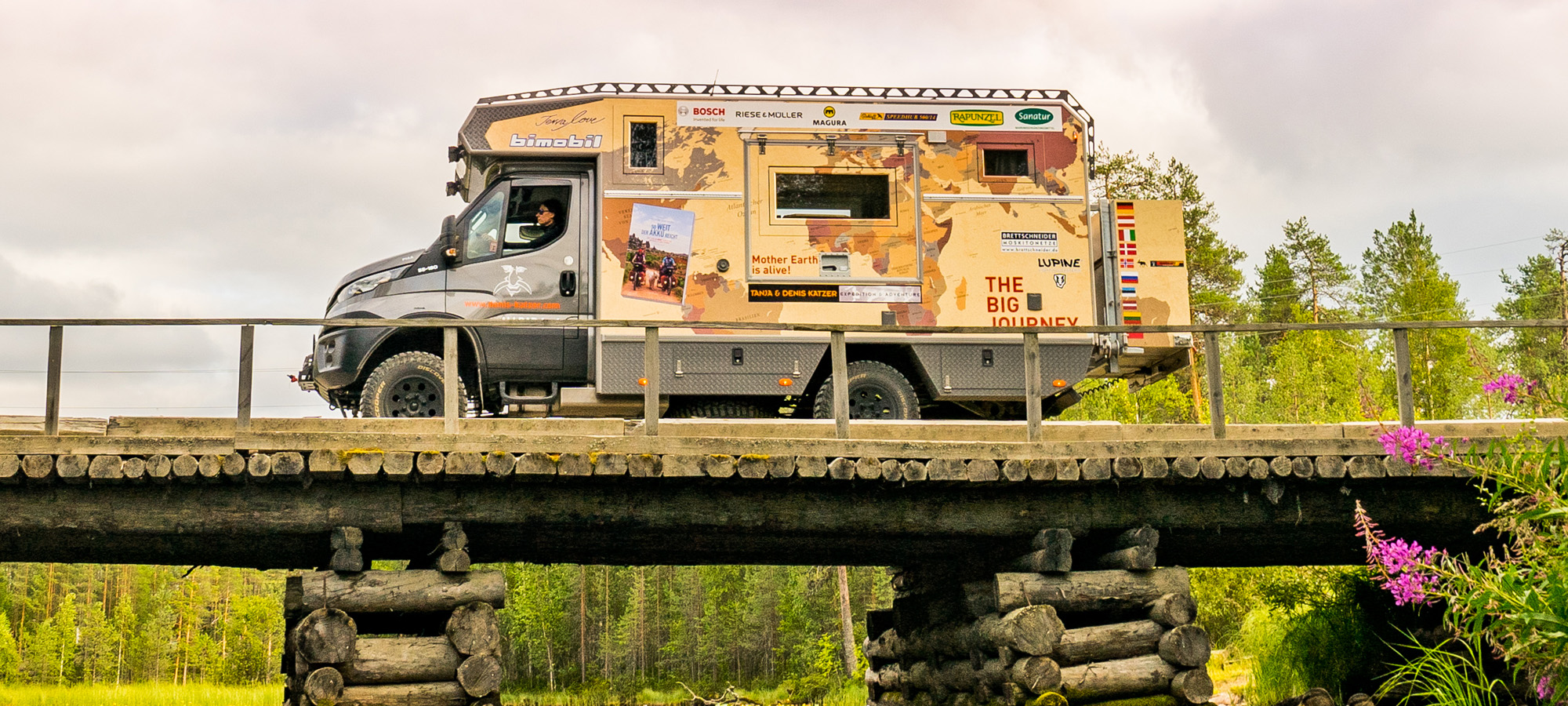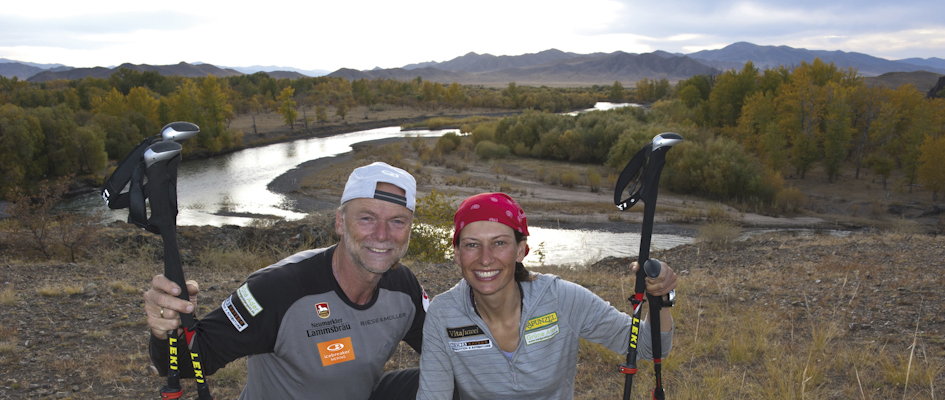
The “Green Vein” project

Denis Katzer & Tanja Katzer in northern Mongolia.
Since 1991, we have been on our great journey on foot, by horse, camel, elephant, motorcycle, bicycle, e-bike or local transportation. In addition to many positive experiences, we also noticed the enormous global environmental pollution and the resulting threat to our Mother Earth. For this reason, and because we are convinced that survival only works in the long term if we humans create a balance, we feel obliged to do something sustainable and started the “Green Vein” tree planting project years ago.
Tree planting campaign:
During our 50th anniversary expedition we are planting trees with the help of friends, fans and cooperation partners of our life project “DIE GROSSE REISE”. For every kilometer we travel, we give back to Mother Earth a few of the many millions of trees that humans have robbed from her.
This creates a symbolic green vein that runs from Germany through the countries we have visited. So far, the Green Vein has planted 7,000 trees worth 35,000 euros.
The “Green Vein” tree planting project was developed in discussions and in cooperation with the natural food company Rapunzel and members of the Bergwaldprojekt e.V. (Mountain Forest Project).
Here you can make a contribution to the
the preservation of our forests.
Link to the donation account
Acaution! Please enter “Green vein” under the name on the certificate. Thank you!
Why are we planting the trees in Germany?
Because our German forests are also threatened by the climate change caused by us humans.
A few figures on the damage caused by
the drought summer of 2018:
1) 30 million cubic meters of damaged timber (more than 1.5 million timber trucks lined up in a row – longer than once around the equator)
2) Every year in Germany, approx. 75 million
cubic meters of wood sustainably harvested.
3) 300 million dried up young plants.
4.) 300,000 hectares damaged by bark beetles.
5.) 300,000 hectares damaged by the drought (a total of about 600,000 soccer fields).
6) Over 600 forest fires (2,500 hectares).
7) 2 billion euros total damage in the forest in 2018 alone.
One goal of the 50-year expedition is to
at least 250,000 trees planted:
1) We need the forest!
2) The forest needs our support!
3) The forest gives us fresh water and clean air!
4) The forest protects our climate and binds CO2!
5) The forest protects biodiversity!
6) Biodiversity is life insurance for us all!
7) Rebel!
8) Mother Earth is alive!
Let’s work together to ensure that our children can still see trees and hear birds chirping tomorrow.

The wildcat in the Spessart
The European wildcat (Felis silvestris silvestris) is quietly finding its way back to its native habitat – the forests of Germany. Germany lies at the center of the European wildcat’s range. Fortunately, it has been found again in the Black Forest, Hunsrück, Rhön, Fichtelgebirge, Harz and Spessart in recent years. That is why we have a special responsibility to preserve these and other endangered species in our forests.
The forest – habitat of the wildcat
The habitat requirements of the European wildcat result from its need for food, cover and the opportunity to rear its young. It likes to stay in near-natural, undisturbed and structurally rich forest areas, which is why it is also known as the forest cat. Forests rich in structure are characterized by multiple layers, regeneration, abundance of deadwood in standing and lying form, windthrow areas,
.jpg)
clearings and forest meadows as well as distinct forest edges and fringe structures. The wildcat needs the richness of structure as cover, for resting and hunting hideaways and for rearing its young. Hunting grounds include open land areas, forest edges, forest meadows, clearings and windthrow areas, which are particularly rich in prey.

The mountain forest project
The non-profit organization Bergwaldprojekt e.V. aims to draw attention to the importance and problems of the forest and provide targeted practical help. That is why he has been organizing project weeks in many parts of Germany for over 30 years, where volunteers can get involved in protecting and preserving our forests. Information on the current projects can be found at www.bergwaldprojekt.de .
With our joint “Green Vein” project, coniferous monocultures in the Spessart are being converted into near-natural mixed forests by planting native deciduous trees such as beech, oak, hornbeam, wild cherry and sycamore maple, providing new habitats for the European wildcat. “Mother Earth is alive”
Donate to the “Grüne Ader” project and with your help we can help ensure that our children will still be able to see trees and hear birds chirping tomorrow!!!
Donation account
Attention! To be able to allocate the donation to the Green Vein, please enter “Green Vein” under the name on the certificate. Thank you!
For every donation worth EUR 5, we finance a tree seedling, which is planted by the Bergwaldprojekt e.V. with volunteers in the Spessart. Anyone who wants to can also take part in the project weeks themselves. Registration at www.bergwaldprojekt.de
Diaries
– Bergwaldprojekt e.V.
– Keyword: Green vein
– GLS Community Bank
– Account number 8022 916 200
– BANK CODE 430 609 67
– IBAN DE87430609678022916200
– BIC GENODEM1GLS
We report on our trip and our growing green streak at regular intervals in our online diary under the heading:

